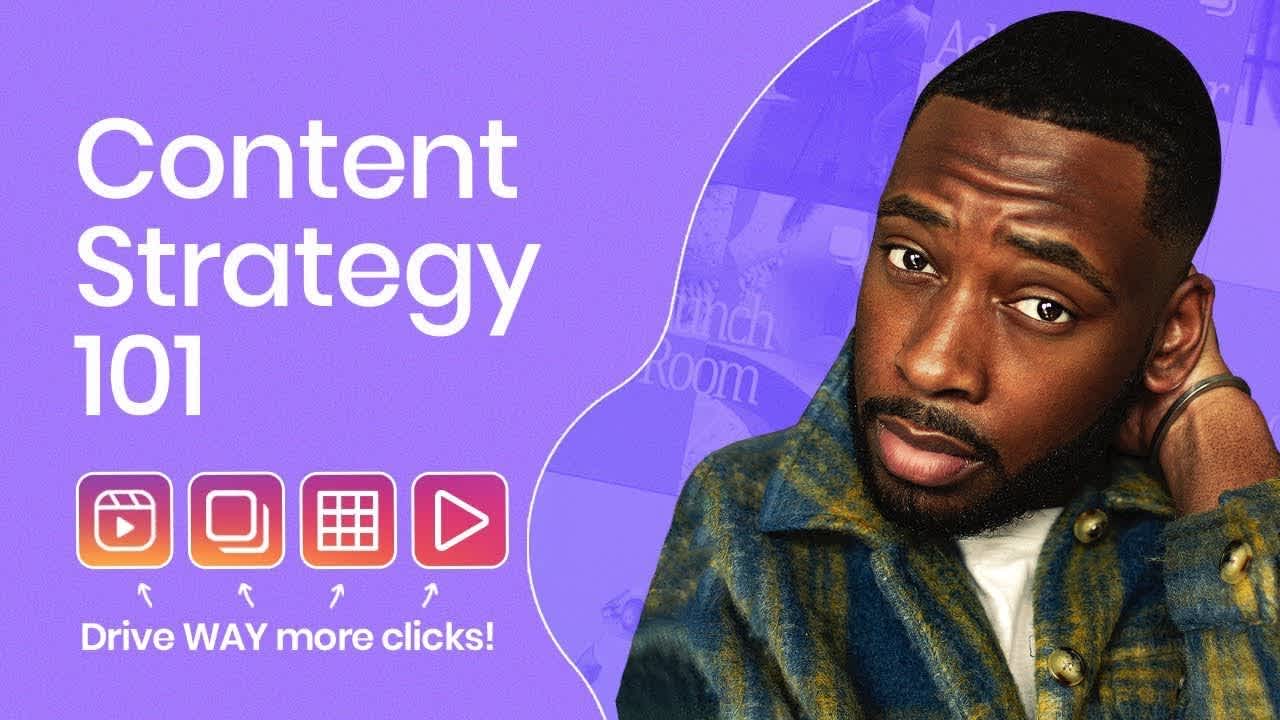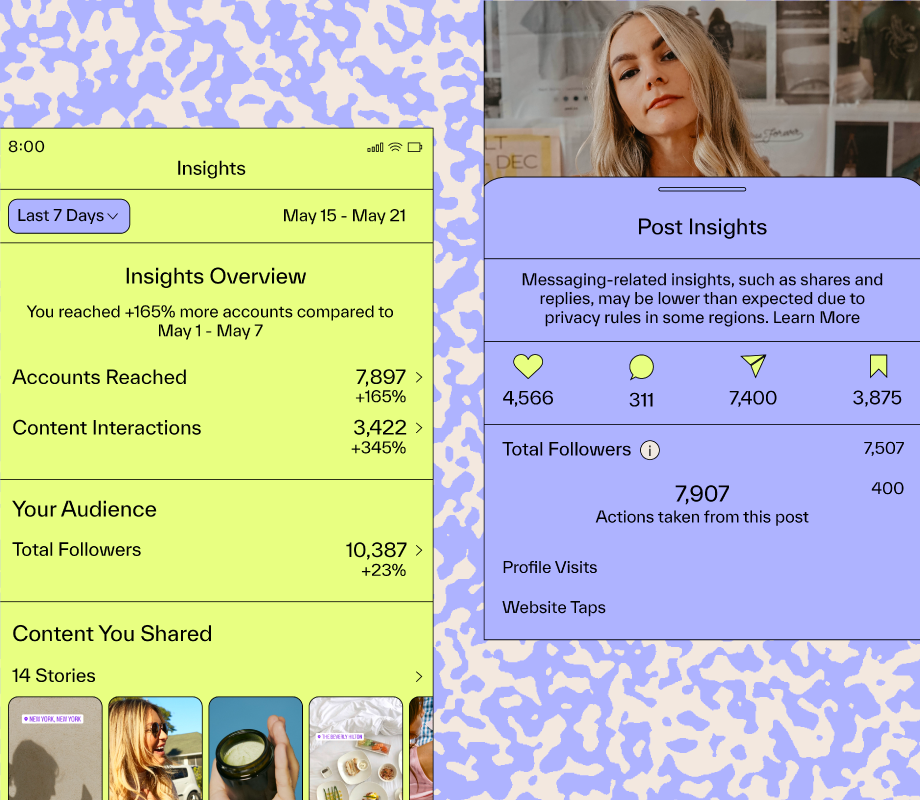Transcript
Introduction
Hi, everyone. My name is Brandon Smithwrick and I'm a Senior Content Strategist at Squarespace, the all-in-one website builder and e-commerce platform.
So a little background on myself for a second. Throughout my career, I've had the pleasure of crafting social media strategies for established brands like Ralph Lauren, to up-and-coming brands like Greats, and brands that sit across various industries from grooming and beauty to fashion to where I currently sit right now in tech.
I've been able to wear multiple hats, from social media coordinator to social media manager to content creator. So I say all that to say I understand the multiple pain points we go through when developing content or trying to make your grid more aesthetically beautiful. Driving conversions, website landings, campaign awareness, you name it.
So today, I'm going to give you some tips to not only inform your content strategy going forward but to take your organic social media content to the next level, where you don't have to invest so much in paid media because your organic is doing so much for you. So let's dive in. Here are four tips on how to leverage insights to inform your content creation.
Tip #1: Create content that helps solve problems
Locate a pattern, and find what your audience is constantly asking of you. Those top customer inquiries, FAQs, and roadblocks in your conversion are actually key indicators to gaps in your storytelling.
During my time in footwear, we had a ton of questions around sizing and fit. How do I care for this product? How do I style this in a versatile way? And just to help customer service in a bigger capacity, I took all those FAQs and customer questions to inform what content we should be creating. I use that insight around top customer questions to not only inform what carousels we should post, what copies should say, or what long-form video on IGTV or YouTube we need to create. But by far, that content then outperformed all benchmarks because not only did it help consumers lower to the funnel, but customer service was able to use this in a bigger way.
So versus saying, "Here's how you do X, Y and Z", "Here's a video that clearly states how to do X, Y and Z", right? Our retail staff is then able to use all this video content for training and help answer questions in a bigger capacity. And ultimately, this content became the most evergreen we ever produced because not only was it relevant for new customers, but we were constantly using it all the time. So this flows perfectly into tip number two.
Tip #3: Track performance by content format
What does this mean? So not all content is created equal, nor should they be weighed the same. If you look at your data solely on engagement rate, you'll probably conclude that these video posts outperform these static image posts. But that doesn't mean that those videos were more impactful for your brand.
Now, let's be clear, video is king. Every platform is finding different ways to leverage video in a bigger capacity. And it makes sense, I think, that every company should really invest in video production specifically for social media. But organic static images and carousels are not going to go away and they should still be a part of your channel mix.
So, focusing on Instagram for a second. You have static images, you have carousels, you have in-feed video, IGTV, Reels, all being fed to users within the home feed. What I recommend doing is weighing static images against other static images, and that gives you a good benchmark on which are better in terms of those static images. Now do the same for carousels, videos, IGTV...
Why would you do this? Great question. So when you do this, you gain a lot of clarity on the average engagement or impressions your carousel should receive. How many views should an NP video have? Or I'm able to identify now: what's driving more followers or website clicks? Is it a Reel or is it an IGTV? Is it a static image post? Before you really get this information, you really have to dive in and figure it out.
Blocking off some time in your calendar is really what I do on the daily because having this insight is so valuable for making an informed content strategy. So not only are you able to say "This carousel performed X percentage over average", but by looking quarterly over quarter, you're able to identify what type of content is performing best for you, what's driving the most impact for your business. And whether that's content by content, post by post, you're able to really make those clear decisions.
Think about planning a campaign. Wouldn't you want to know if a carousel is better to lead with versus an image or video? Or if it's maximum awareness, is it a Reel for the higher views? And then I'm going to flight a still because those are more shareable, and then a carousel that gets more in-depth storytelling? You're able to really put those pieces of the puzzle together where you have all this information.
Tip #4: Attach a purpose to your post
So my fourth and final tip is to use all this insight you've gathered and attach a purpose to your post. So after you've looked at the insight, you see the pattern in your content, you see how your audience interacts with these posts, your cadence and what you post now makes a lot more sense.
Think of it like this. By understanding maybe a certain type of single image post drives an increased amount of saves, versus other formats, or maybe that Reels drive a higher amount of profile visits and follows, your flighting for a big campaign is now more impactful.
Let's say that this post drives the most comments in our content mix. So we're going to utilize this post to drive hype and conversation around the product. Then we're going to post this post which, time after time, receives the best amount of shares. So we're going to use this to increase awareness of the product launch. And then finally, we're going to post this type of post, which historically receives the most website clicks and profile visits, which is great for driving users to our link in bio and then driving them to site. So, by using all this information, you're able to make more data-driven decisions around your content strategy on social.
Recap
So let's review what we went over today.
Tip #1: Create content that helps solve problems. Find those FAQs and make sure your content fills in the gap.
Tip #2: Organic social media content should prioritize SEO week by week. Social has more content output than any other marketing channel. You can't send an email every single day, but you can post on social every day you want. So make sure your content is not in vain and that your work can be easily discovered natively within these platforms.
Tip #3: Track performance by content format. This gives you great insight on if your content is doing what it's supposed to do.
And lastly, Tip #4: Attach a purpose to your post. Whether that's awareness, conversation or conversion, you should be able to clearly say why you're publishing this type of content.
I hope you found all this helpful. My name is Brandon. Thank you so much.



